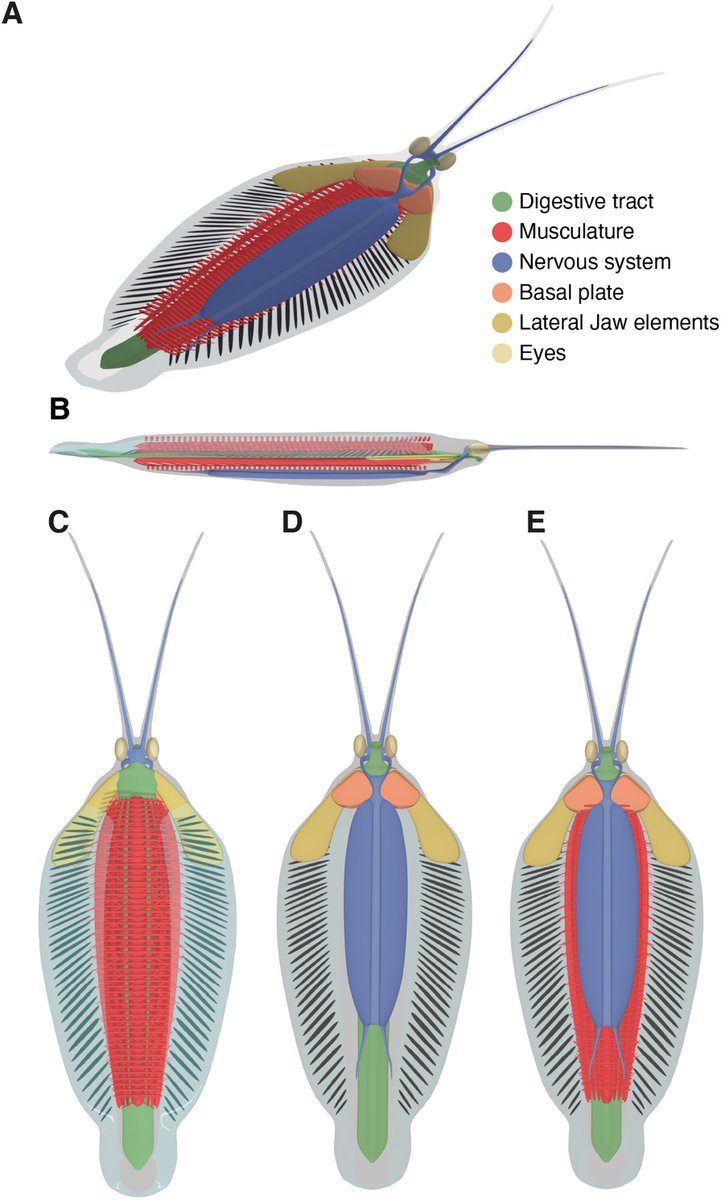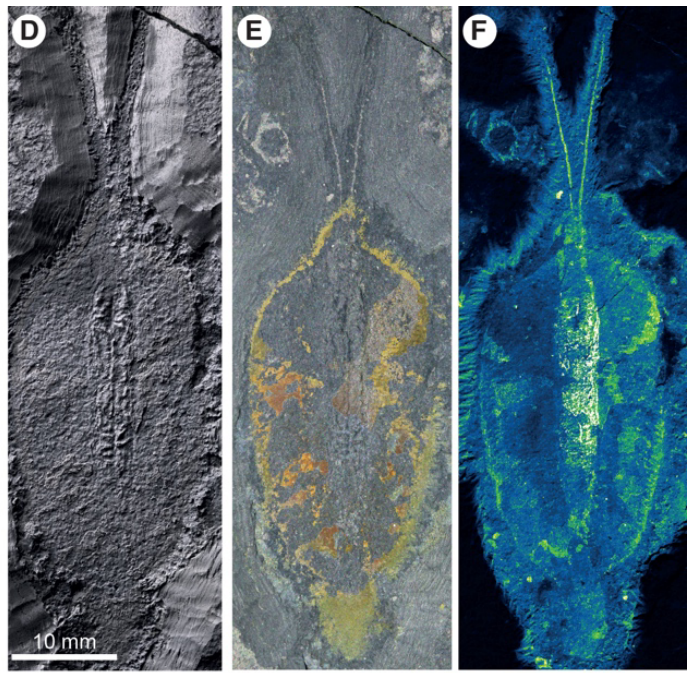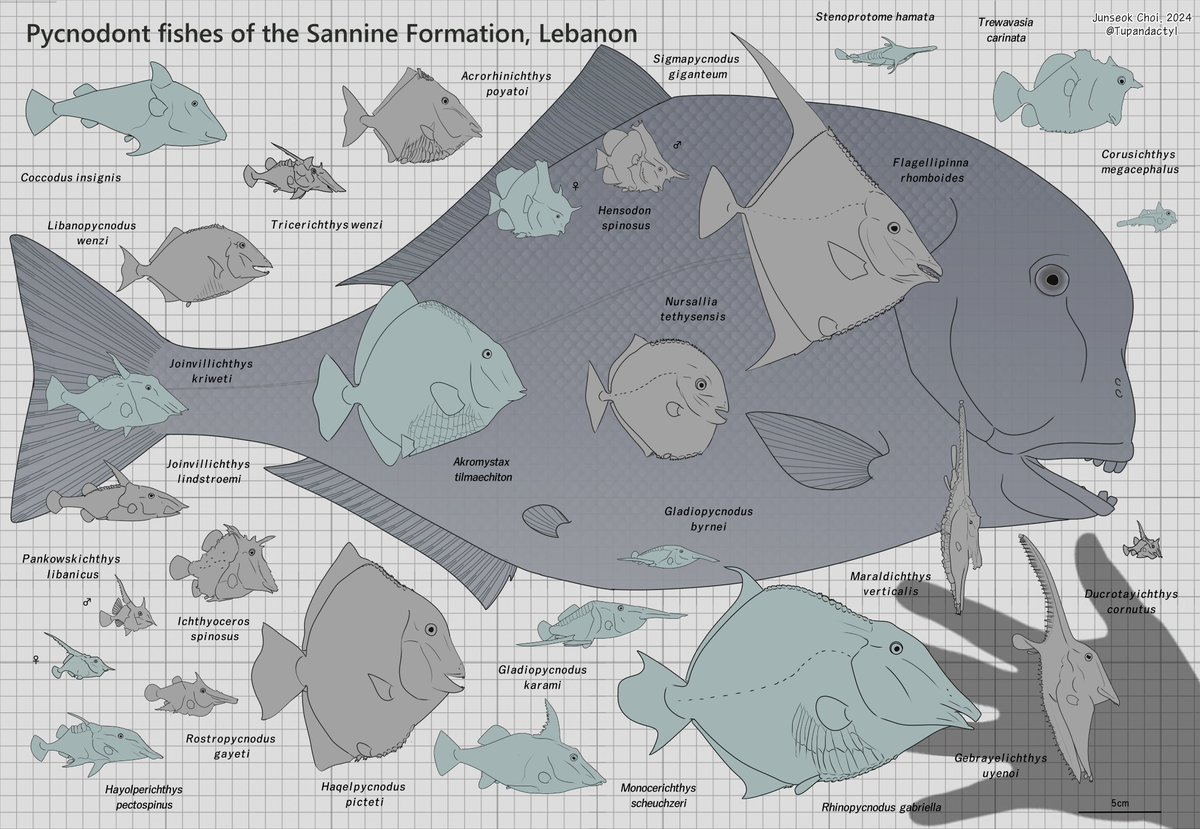Finally, I was able to tell about this guy! Please give the monstrous new Cambrian weirdo a big round of applause. Here's Timorebestia koprii, a cuttlefish-sized the largest chaetognathiferan found in North Greenland! (1/15)
science.org/doi/10.1126/sc…

science.org/doi/10.1126/sc…

Sirius Passet was discovered by Danish scientists in 1984, during a geological mapping of North Greenland. Since then, several expeditions have been conducted in the UK and Denmark. (2/15) 

Sirius Passet is hard to access than other Burgess-Type fossil sites. This is not only its low accessibility due to remote location, but also needs a lot of permission to access inside a Northeast National Park. (3/15) 

Since 2016, Korea Polar Research Institute(KOPRI) has visited Sirius Passet. It is international cooperation with British and Danish scientists, they conducted annual expedition (except during the pandemic). (4/15) 

A lot of novelty has found from that series of exploration, and Timorebestia koprii-means Fearful beast of KOPRI- is certainly one of the most impressive thing. (5/15) 

Chaetognaths-or arrow worms- are one of the earliest swimming predator on earth. Their grasping spines are found from an very early cambrian(terreneuvian), and fossils found in China and Canada show they haven't changed much since their appearance. (6/15) 

But Timorebestia was nothing like them. It has large lateral and caudal fin with fin rays, a pair of long antenna. and instead of a grasping spines, there was a jaw that resembled a gnathosmulid. (7/15) 

And on top of all this, Timorebestia was an incredible monster of size! It reached ~20cm, and ~30cm when antennae are included. T. koprii is the biggest of all chaetognathiferans, and it is amazing considering that the largest modern arrow worm is only a 10cm. (8/15) 

Despite all these differences, the researchers found that T.koprii still belonged to stem-group arrow worms. Sirius Passet is a fossil that is exceptionally prone to phosphatization of organic tissue after death. (9/15) 

In comparison with modern species and the unnamed fossil arrow worms of Sirius Passet, Timorebestia had lateral neuron stomata of the ventral ganglion. It is nervous structure, and the characteristic of chaetognaths only. (10/15) 

In todays marine ecosystem, arrow worms are just small zooplankton. But T.koprii was one of the biggest predator of Cambrian. Actually, we have some specimens that ate small and abundant arthropods, Isoxys volucris. This creature was extremely fealful beast! (11/15) 

To sum up, we now know that the ancestors of a completely unexpected group once acted as gigantic high-tier predators. Consider the ancestors of arrow worms acquired spines from the early Cambrian period. The ancestor of Timorebestia must have branched before them. (12/15)
Before pelagic panathropods such as Anomalocaris thrived, they may have functioned as the dominant pelagic predators. Because Timorebestia was soft-bodied swimming animal like squid, it can also explain why we didn't know about such bizarre giants yet. (13/15)
This discovery clearly demonstrates the importance of Sirius Passet fossil site, and how little we know about the past of soft-bodied animals. There are much more secrets left in the Sirius Passet that can surprise you all. So stay tuned for this treasure trove! (14/15) 

and....
Anyway, I'm just an undergraduate trainee who's not on the KOPRI research team yet, but I've been educated here in recent years and have seen specimens of this incredible creature. I'm so excited to share this wonder with you right now! (15/15)
Anyway, I'm just an undergraduate trainee who's not on the KOPRI research team yet, but I've been educated here in recent years and have seen specimens of this incredible creature. I'm so excited to share this wonder with you right now! (15/15)

@threadreaderapp unroll
• • •
Missing some Tweet in this thread? You can try to
force a refresh











